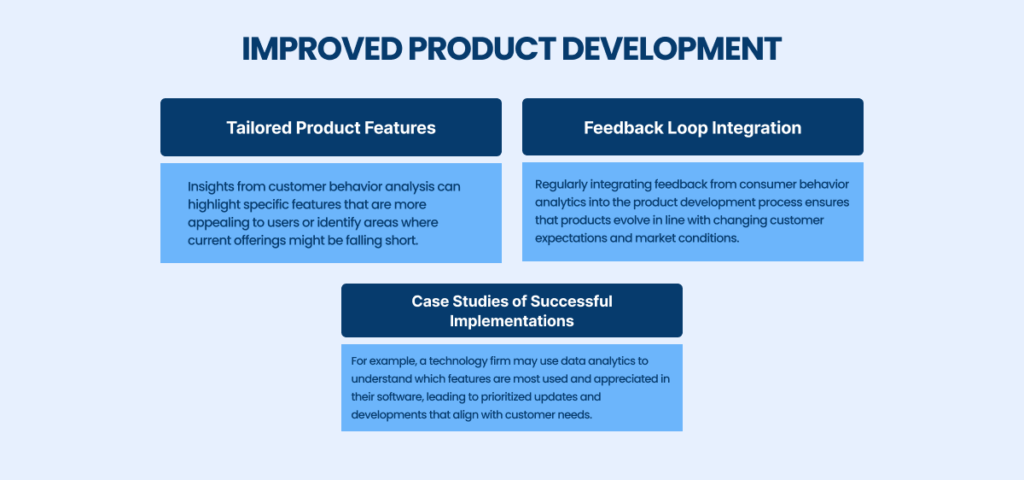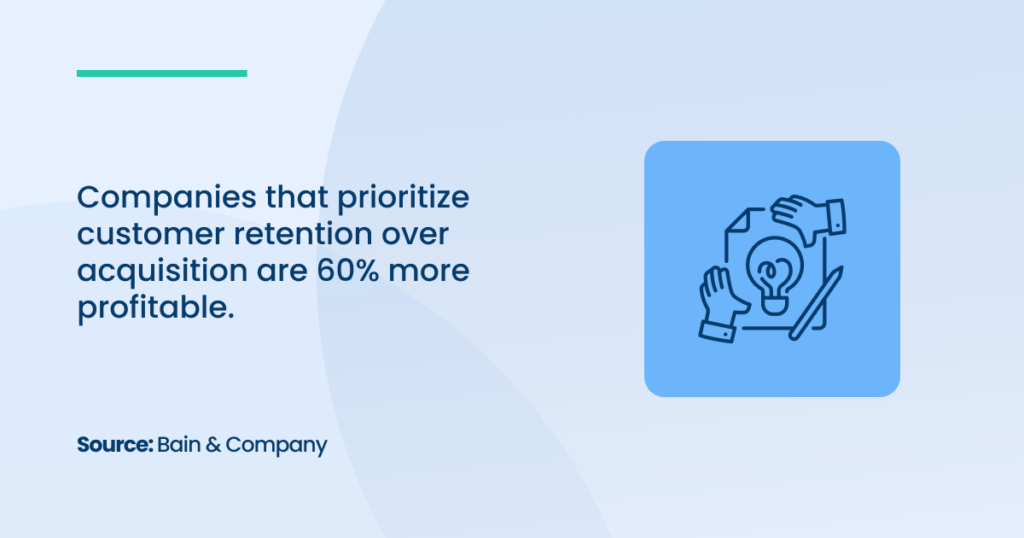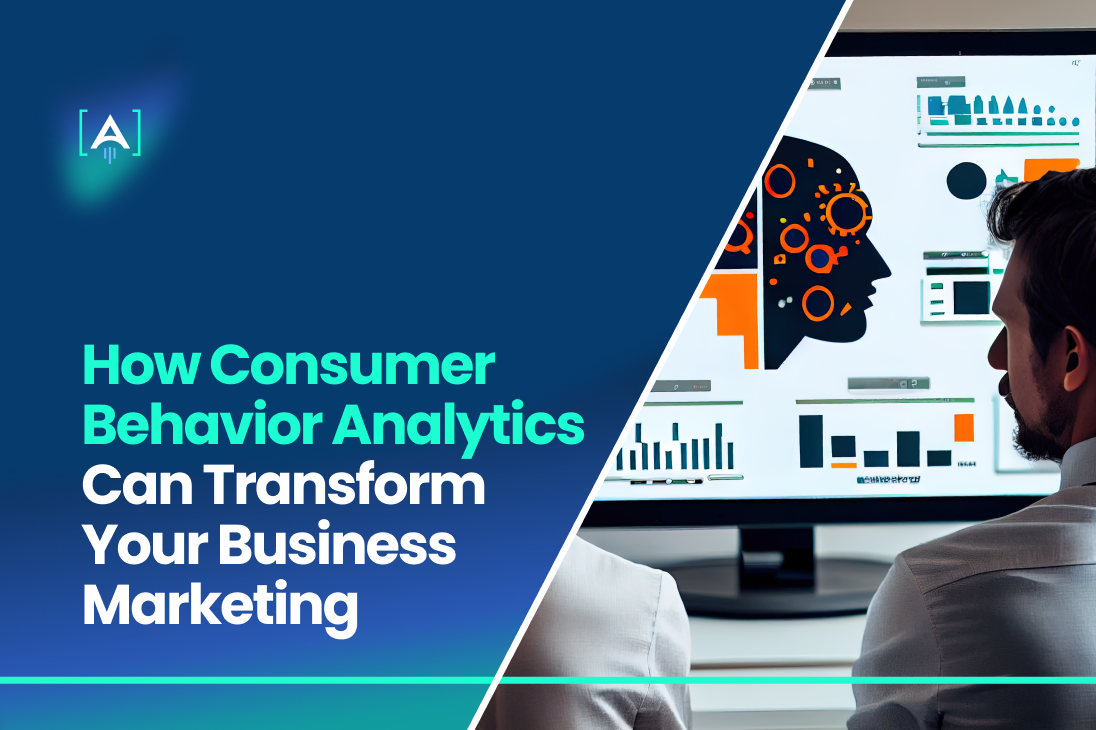Businesses constantly search for ways to cut through the noise and connect with their target audience.
Consumer behavior analytics is a powerful tool that can revolutionize your marketing strategy.
Businesses can gain invaluable insights into consumer preferences, motivations, and behaviors by analyzing vast amounts of data.
The global behavior analytics market size was valued at USD 801.8 million in 2023.
Source: Fortune Business Insights
The behavior analytics market is projected to grow from USD 1,096.5 million in 2024 to USD 11,468.3 million by 2032, exhibiting a CAGR of 34.1%.
This growth underscores the increasing demand for expertise in data-driven strategies, a service that a Fractional CMO Agency can provide efficiently.
The blog post will explore how consumer behavior analytics can transform your business marketing, discussing the key benefits and different data types.
What is Consumer Behavior Analytics?
Consumer behavior analytics systematically examines and interprets customer data to understand and predict consumer purchasing behaviors.
Source: Fortune Business Insights
This process involves analyzing customer behavior across multiple touchpoints and using insights to tailor marketing strategies, enhance customer experience, and drive business growth.
It encompasses a variety of analytical techniques and methodologies to transform raw customer data into actionable insights.
Key Data Sources for Consumer Behavior
Consumer behavior analytics relies heavily on diverse data sources to comprehensively view customer behavior. These sources include:
- Transactional Data: This includes details of customer purchases, such as what was bought, when, and at what price. Transactional data is crucial for understanding purchasing patterns and trends over time.
- Social Media and Web Analytics: Data from social media platforms and website interactions can reveal how customers feel about products and brands. Analyzing likes, shares, comments, and page views provides insights into customer preferences and engagement levels.
- Customer Feedback: Surveys, reviews, and feedback forms are direct sources of customer opinions and satisfaction levels. This data is invaluable for understanding customer retention strategies and customer loyalty factors.
- Behavioral Data: This involves tracking and analyzing customers’ digital footprints when they interact with a brand online. It includes data from website navigation paths, app usage, and responses to various marketing campaigns.
- Demographic and Psychographic Data: Information about customers’ age, gender, income level, lifestyle, and values helps segment the customer base and more effectively target specific groups.
Each data source provides a layer of understanding that, when integrated, offers a comprehensive view of customer behavior.
The ability to synthesize this data effectively sets apart successful consumer behavior analysis.
Benefits of Consumer Behavior Analytics
Consumer behavior analytics offers a range of benefits that can transform the way businesses interact with their customers, develop products, and market their services.
Leveraging data from various customer interactions, this analytics helps sculpt strategies that are both customer-centric and highly effective in terms of engagement and conversion.
Enhanced Customer Understanding
Understanding customer preferences and needs is fundamental to any successful business strategy.
Consumer behavior analytics sheds light on the complex mechanisms of customer decisions and behaviors by examining qualitative and quantitative data gathered across various touchpoints.
- Deep Insights from Data Analysis: Consumer behavior analytics utilizes advanced data analysis tools to parse large sets of quantitative data, like purchase histories and online behavior metrics, and qualitative data, such as customer feedback and survey responses.
This integrated approach helps identify patterns and trends that are not immediately apparent. - Segmentation and Personalization: Through market segmentation analysis, businesses can divide a broad customer base into smaller, more defined categories based on shared characteristics.
This segmentation allows for more targeted marketing strategies and enhances customer experience by addressing specific needs and preferences. - Predictive Analytics for Future Behaviors: By analyzing how customers interact with a business, predictive models can be developed to forecast future buying behaviors, helping companies proactively adjust their strategies.
- Enhancing Customer Journeys: Understanding the customer journey through consumer behavior analytics allows businesses to create more effective touchpoints that enhance user interaction and satisfaction.
This can lead to improved customer retention rates as businesses can quickly identify and mitigate potential friction points in the customer journey.
Improved Product Development
Consumer behavior analytics plays a crucial role in informing product development processes.
By understanding user behavior and preferences, businesses can design products that better meet the needs of their target audience.

Effective Marketing Strategies
The insights gained from consumer behavior analytics are invaluable in crafting marketing strategies that reach and resonate with the target audience.
- Data-Driven Campaign Design: By understanding the nuances of customer behavior, companies can design highly personalized and effective marketing campaigns. This includes selecting the right channels, timing, and messages that align with the observed behaviors of different customer segments.
- Enhancing Omnichannel Strategies: An effective omnichannel marketing strategy ensures customers receive a seamless and consistent experience across all platforms and channels. Consumer behavior analytics helps identify the preferred channels and touchpoints for different segments, allowing businesses to integrate their marketing efforts more effectively.
- Competitive Differentiation Through Tailored Messaging: By utilizing detailed insights into customer preferences and behaviors, businesses can craft messages that speak directly to their audience’s desires and needs, setting them apart from competitors.
- Optimization of Marketing Spend: By clearly understanding which marketing tactics are most effective, businesses can allocate their budgets more efficiently, reducing waste and increasing the ROI of their marketing initiatives.
Overall, the strategic application of consumer behavior analytics fosters a deeper connection with customers, enhances product development, and refines marketing strategies.
Leveraging these insights can lead to significant competitive advantages and business growth, whether guided by an internal marketing team or outsourced to a fractional CMO or CMO as a service.
Applying Consumer Behavior Analytics
Applying consumer behavior analytics effectively can revolutionize how businesses interact with their customers, manage their marketing budgets, and improve customer retention.
This advanced approach leverages both quantitative and qualitative data, providing a deep dive into consumer behaviors and preferences, which facilitates highly tailored marketing strategies.
Personalizing Customer Interactions
Personalizing customer interactions involves using insights gained from consumer behavior analytics to tailor communications and offers to meet the unique needs and preferences of individual customers.
Source: Super Office
This practice is essential in today’s market where consumers expect businesses to understand and anticipate their needs. By analyzing data collected through customer interactions and feedback, businesses can create a more personalized experience that resonates with the customer.
The techniques for personalizing customer interactions include the analysis of purchase histories and online behavior patterns to segment customers based on their preferences and previous interactions.
From there, companies can craft personalized messages and offers that are sent through the customer’s preferred channels, ensuring that these communications are both timely and relevant.
For instance, if consumer behavior analytics reveal that a segment of customers frequently purchases a particular type of product, businesses can customize their communications to these customers with related offers or products.
Furthermore, integrating this personalized approach into integrated marketing solutions ensures consistency across all touchpoints, enhancing the overall customer experience and increasing the effectiveness of individual campaigns.
This seamless integration helps maintain a cohesive brand message and optimizes customer engagement across all platforms.
Optimizing Marketing Spend
Consumer behavior analytics plays a crucial role in optimizing marketing spend by ensuring that budget allocations are directed toward the most effective strategies and channels.
By understanding which aspects of marketing generate the most customer engagement and sales, businesses can allocate their budgets more effectively, reducing waste and increasing return on investment.
Source: Forbes
This optimization process involves analyzing the performance data of different marketing campaigns and channels to identify which ones offer the best returns.
For example, if data shows that email marketing campaigns lead to higher conversion rates than social media ads for a particular segment of customers, a business can allocate more of its marketing budget to email marketing for that segment.
The use of consumer behavior analytics also supports lead generation optimization by identifying the most likely prospects and the most effective methods of reaching them.
Additionally, lifecycle marketing automation can be employed to deliver the right messages at the right times throughout the customer journey, which not only maximizes the impact of marketing efforts but also enhances the efficiency of spending.
Enhancing Customer Retention
Increasing customer loyalty and retention is another significant application of consumer behavior analytics.
By understanding the factors that influence customer satisfaction and loyalty, businesses can implement strategies specifically designed to improve these areas.
This includes identifying potential pain points in the customer journey and addressing them proactively to enhance overall customer satisfaction.

For instance, if consumer behavior analytics indicate that customers are dissatisfied with the customer service they receive after making a purchase, a business can focus on improving these interactions to enhance satisfaction and retention.
This might involve training customer service representatives more effectively or introducing more efficient systems for handling customer queries and complaints.
Moreover, retaining existing customers can be achieved through personalized rewards and loyalty programs that acknowledge and incentivize repeat business.
Overcoming Challenges in Consumer Behavior Analytics
Understanding and managing the complexities of data collection and privacy issues is crucial for effective consumer behavior analytics.
As businesses increasingly depend on data-driven personalization to refine their marketing strategies and enhance customer interactions, they must also navigate the intricate landscape of ethical considerations and legal requirements associated with data collection.
- Ethical Considerations in Data Collection: Ethical data collection practices ensure respect for consumer privacy and trust.
Businesses must be transparent about what data is being collected, how it is being used, and with whom it is shared. Ethical practices not only comply with legal standards but also build consumer trust, which is essential for long-term relationships.
- Informed Consent: Ensure that customers are fully informed and have consented to the collection and use of their data.
This includes clear communication about the purpose of data collection and the benefits for the customer.
- Data Minimization: Collect only the data that is necessary for the specified purposes.
This practice not only simplifies data management but also reduces the risks associated with data breaches.
- Anonymization and Pseudonymization: Where possible, anonymize or pseudonymize data to protect consumer identities.
This helps in mitigating the impact of potential data breaches and maintaining consumer trust.
- Legal Requirements for Data Collection: Various jurisdictions have enacted laws and regulations that govern the collection, use, and storage of consumer data.
Compliance with these regulations is not just a legal requirement but also a crucial component of corporate responsibility.
Partner with [A] Growth Agency for Your Consumer Behavior Analytics
Consumer behavior analytics is a game-changer for businesses seeking to thrive in today’s competitive market.
By leveraging the power of data, you can gain a deeper understanding of your customers.
Remember, the key to successful consumer behavior analytics is not just collecting data but using it effectively.
[A] Growth Agency will strictly follow the rules.
Excellence is our standard. We cultivate a team of ‘A players’ – top-tier talents who bring passion and expertise to every challenge.
Our commitment to excellence ensures that we not only meet but consistently exceed the expectations of our clients, setting new benchmarks in our industry.
Moreover, we treat every business as a unique entity.
This should tell a lot about us.
Don’t wait!

